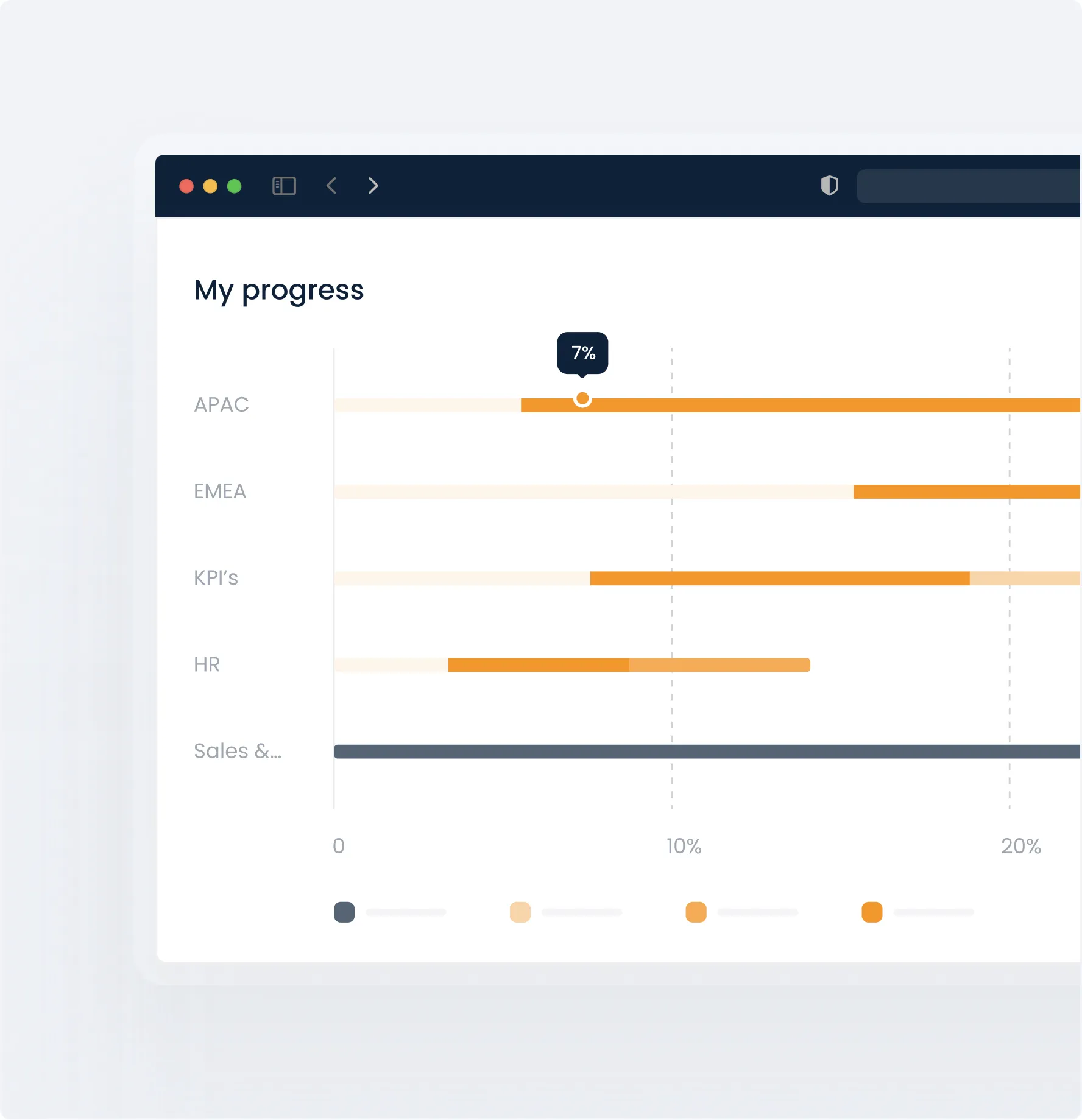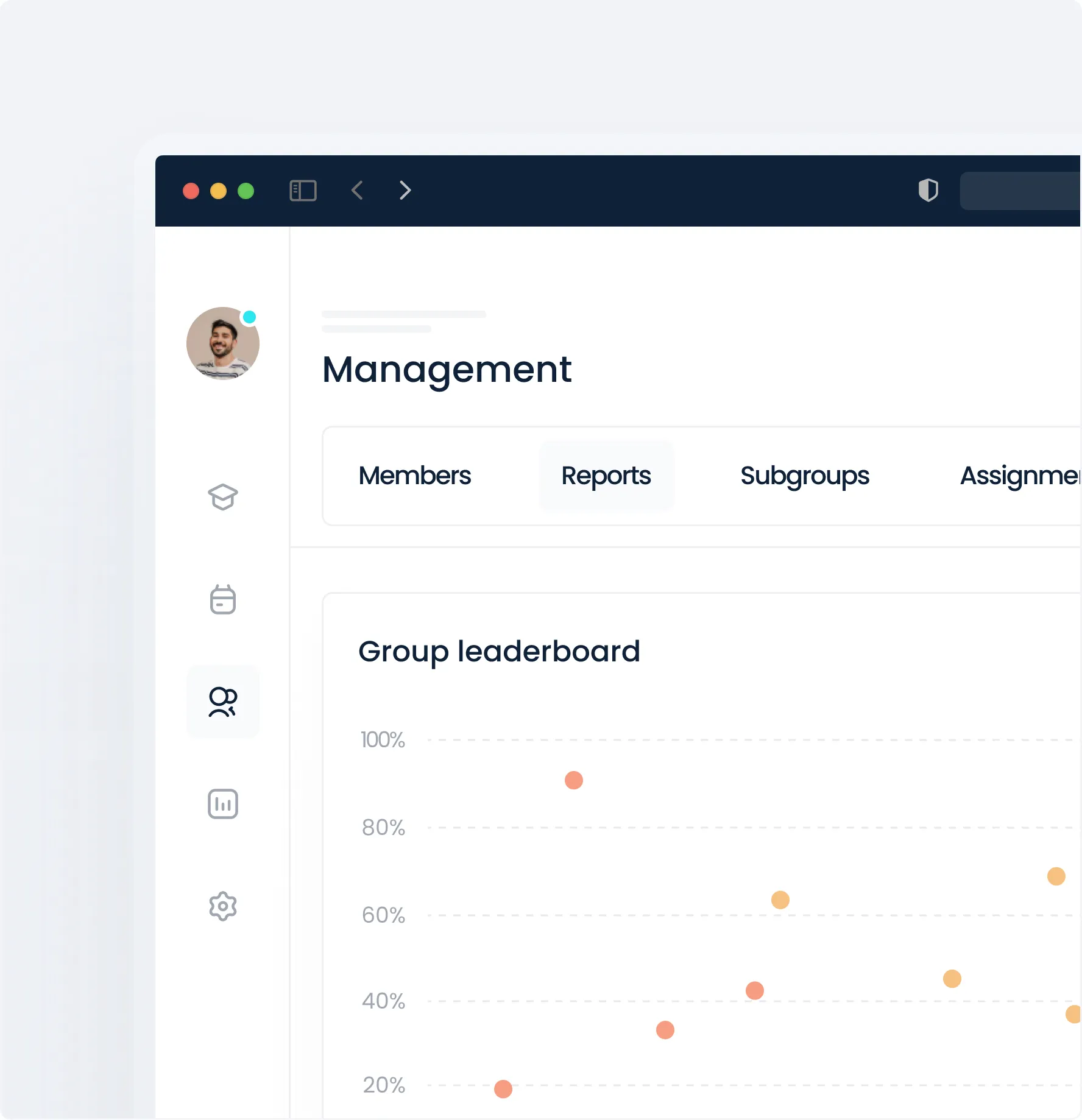Real-time
Live dashboards
Multi-level
Org to individual
Skill gaps
Targeted insights
Custom reports
Any dimension
Leaderboards
Gamification
Compliance
Audit-ready
See progress as it happens.
Real-time dashboards show who's learning, who's stuck, and who's excelling. Track every metric that matters to your organization.
- Active users by hour — Heatmap of learning activity patterns
- Completion trends — Track course completions over time
- Score distributions — Understand assessment performance
- Time analytics — See how long learners spend on content
Find knowledge gaps before they become problems.
Identify where your team needs help. Our skill gap analysis pinpoints weak areas so you can target training where it matters most.
- Competency mapping — Track skills across your organization
- Gap identification — Spot knowledge shortfalls instantly
- Remediation paths — Auto-suggest courses to close gaps
- Progress tracking — Watch improvement over time

Gamify learning. Inspire performance.
Recognition drives motivation. Leaderboards let you celebrate top performers and create healthy competition that boosts engagement.
- Multiple leaderboards — By course, team, or organization
- Time-based rankings — Daily, weekly, monthly, all-time
- Custom metrics — Rank by completions, scores, or points
- Public or private — Control who sees rankings

Everything you need to measure learning impact
Real-Time Dashboards
Live updates as learners progress. No waiting for batch reports.
Multi-Level Reports
Drill down from organization to team to individual. See the big picture and the details.
Skill Gap Analysis
Identify knowledge gaps at any level. Target training where it matters most.
Custom Reports
Filter by any dimension. Build the exact report you need.
Leaderboards
Gamify learning with rankings. Recognize top performers and inspire others.
Compliance Tracking
Audit-ready records. Track completions, attempts, and scores with timestamps.